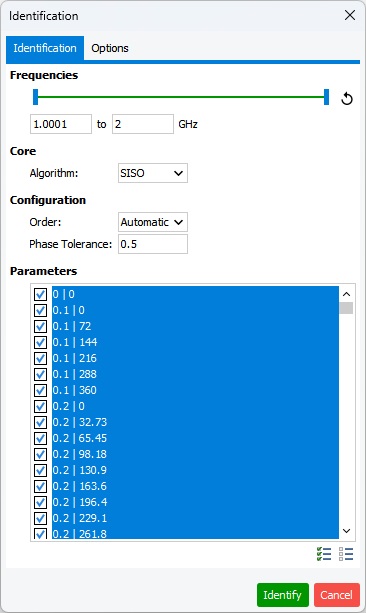Recommendations to perform the identification
-
Use of narrower frequency bands: the possibility of concentrating the analysis
in narrower frequency bands provides important advantages:
- Perfect fit more easily obtained. Better sensitivity.
- The effects of the distributed delays introduced by the transmission lines can be correctly approximated by a transfer function of reasonable order.
- Frequency responses that are very complex with too many resonances can be cut in sub bands that are analyzed separately.
- Once the critical band is known, there can be a significant gain in simulation time when performing parametric analysis.
-
it is strongly recommended (very strongly indeed) focusing on critical bands:
- To re-confirm that unstable poles are obtained at a particular frequency, always repeat the identification centering the analysis on the frequency of the unstable poles.
- Anytime you doubt about your results (as when detecting whether a right-half plane quasi-cancellation is physical or just appears mathematically because of an excessively high order) center the analysis on the critical bands.
-
Repeat the identification increasing the phase tolerance. A value of the phase
tolerance too strict (small) may give raise to numerical
quasi-cancellations.

- Repeat the identification changing the identification order manually. From the SISO method, the order used by the Automatic algorithm can be used as a starting point. If reducing the Order of the identification, there is a good fitting in magnitude and phase and the quasi-cancellation/low sensitivity poles have disappeared, they were numerical poles.
-
Perform a parametric analysis. If varying a circuit parameter, the
quasi-cancellation/low sensitivity poles move to the left-hand side (LHS) of the
plane, they are physical poles.

